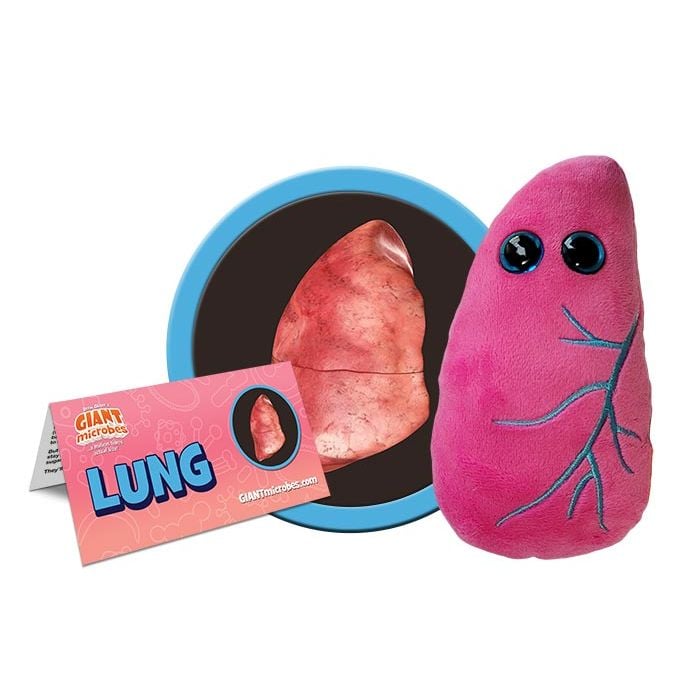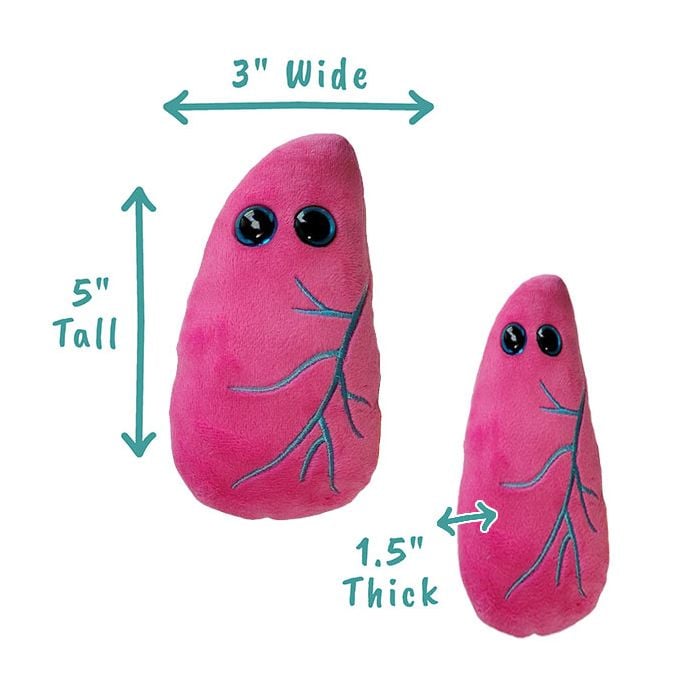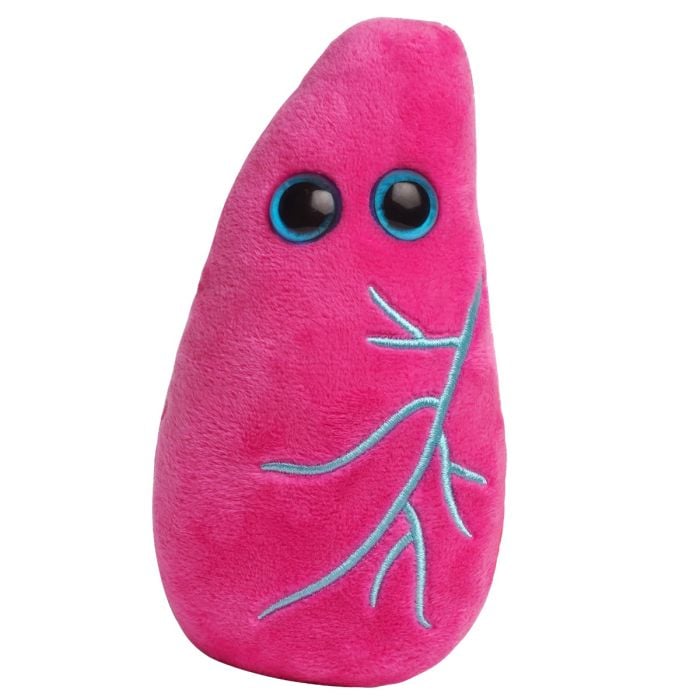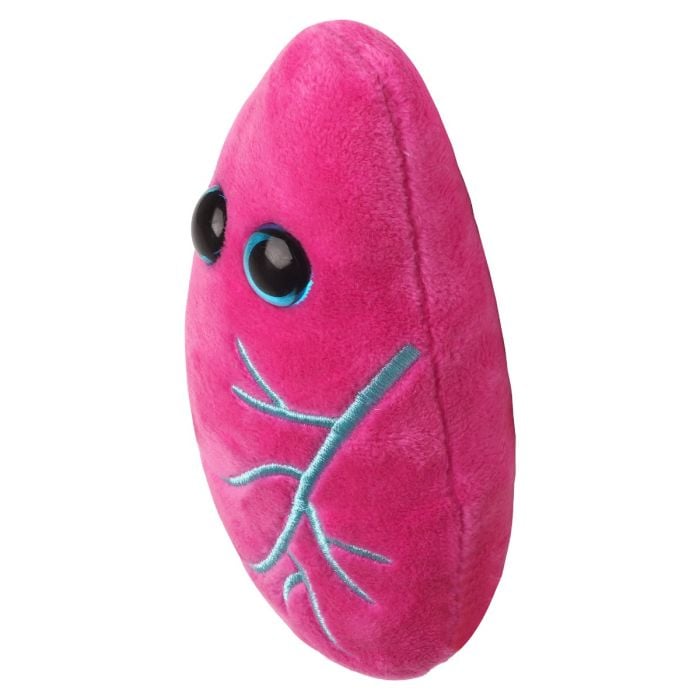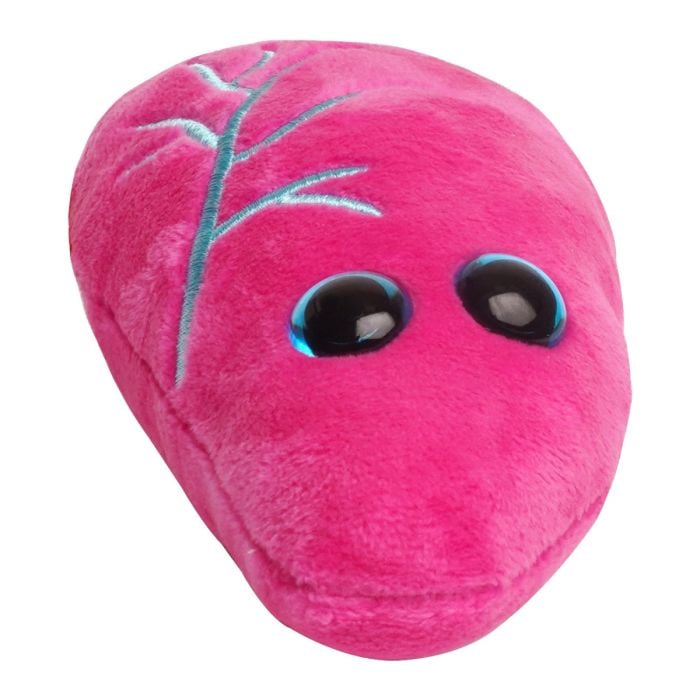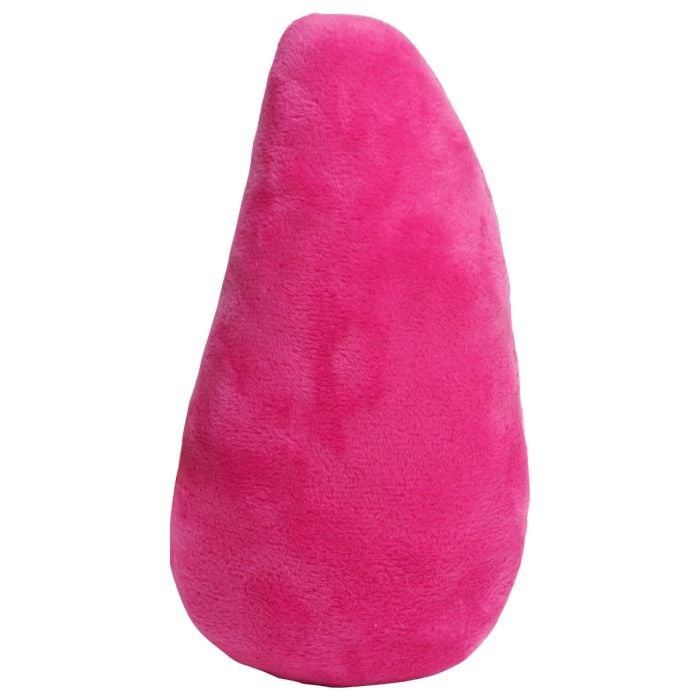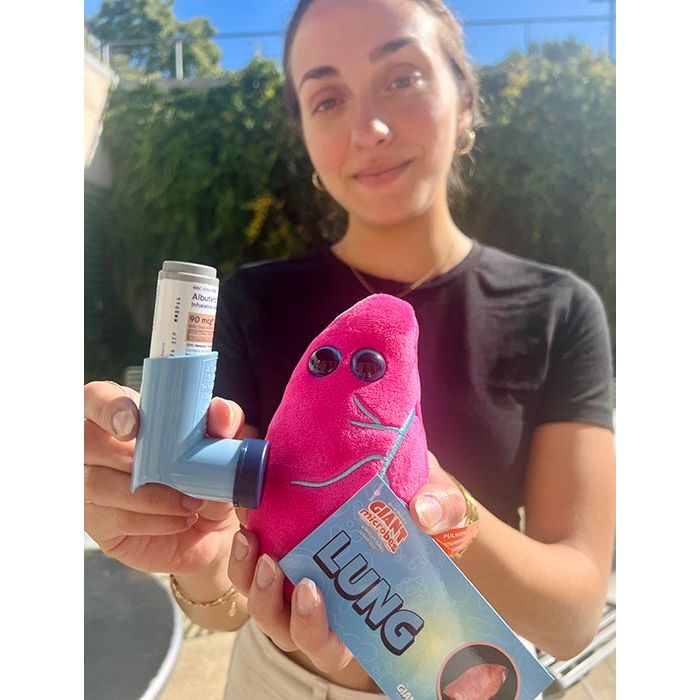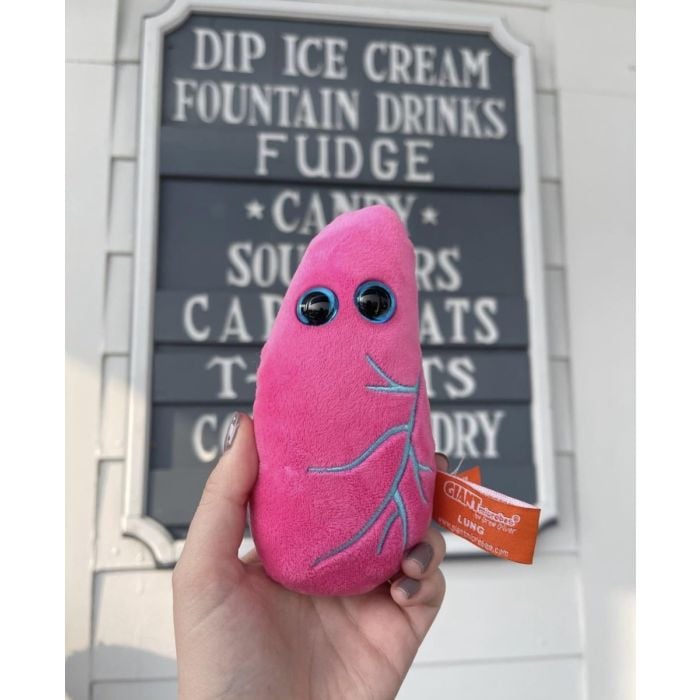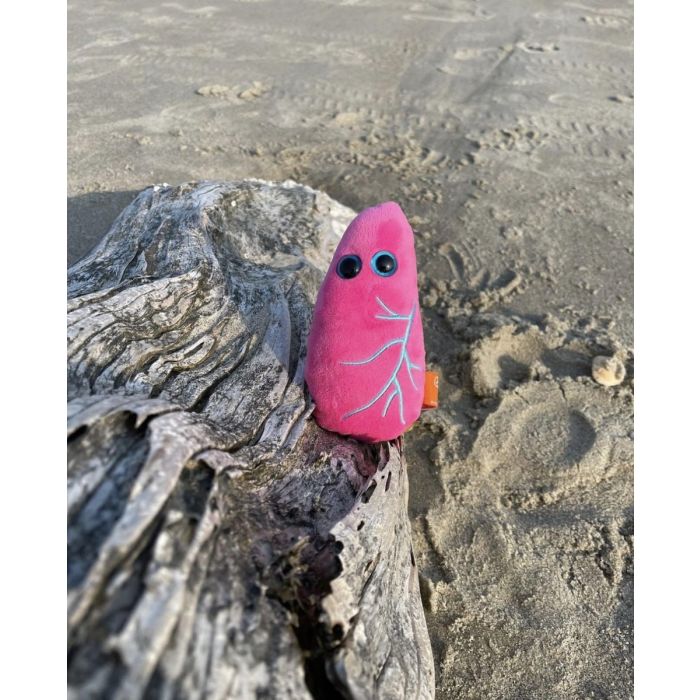Lung
GIANTmicrobes Lung is soft, cuddly and the most memorable “Feel better” and Get Well gift for friends, family and loved ones with asthma and respiratory issues.
Adorable plush representation of your Lung provides a fun hands-on-way to learn about your respiratory system, anatomy and biology. Unique gift for scientists, students, pulmonologists, respiratory therapists, educators, public health experts and anyone with a healthy sense of humor!
Features detailed embroidery, high quality materials and includes an educational printed card with fascinating facts about this incredible organ!
Size: 5 x 3 x 1.5”
Product Details
Additional Information
| Sizes | Giantmicrobes are based on actual microbes, cells, organisms and other critters, only 1,000,000 times actual size! Gigantic (GG) 16-24" XL (XL) 10-15" Original (PD) 5-8" Keychain (KC) 2-4" with clip |
|---|---|
| Materials | Plush from all new materials. Stuffed with polyester fiber fill. Surface washable: sponge with water & soap, air dry. |
| Packaging | Each plush microbe includes a printed card with fun, educational and fascinating facts about the actual microbe or cell. |
| Safety | Every product meets or exceeds U.S. and European standards for safety. For ages 3 and up. |
All about Lung
FACTS: Your two lungs are the main organs of the respiratory system filling most of your chest. Lungs rely on your rib muscles and the diaphragm to expand and deflate. Air travels down your trachea into two bronchi, dividing into bronchioles and then into the millions of lung cells called alveoli. These clusters of tiny airbags provide a tennis-court sized area to maximize gas exchange. This is where the magic happens, where oxygen from the air is absorbed and passes into your blood. Carbon dioxide, a waste product of metabolism, travels from the blood to the alveoli, where it flows out and is exhaled.
Alveoli is a word taken from Latin meaning “little cavity”. So the lungs are in effect an enormous cavity enabling us to breathe. The lungs are covered by a thin layer of tissue, the pleura, and by lubricating fluid which allows smooth expansion and contraction.
There are many types of lung cells. Type 1 epithelial cells, or squamous alveolar cells, form most of the alveoli. They are devoid of organelles, such as mitochondria and golgi bodies, and have incredibly thin walls for effective gas exchange. Type 2 epithelial cells are cuboidal in shape and produce a surfactant to keep the alveoli moist. The lungs also have alveolar macrophages that provide a defensive mechanism against microbes and other harmful substances we breathe into the lungs. If this seems like a lot to take in, just take a deep breath and cherish your magnificent lungs!












